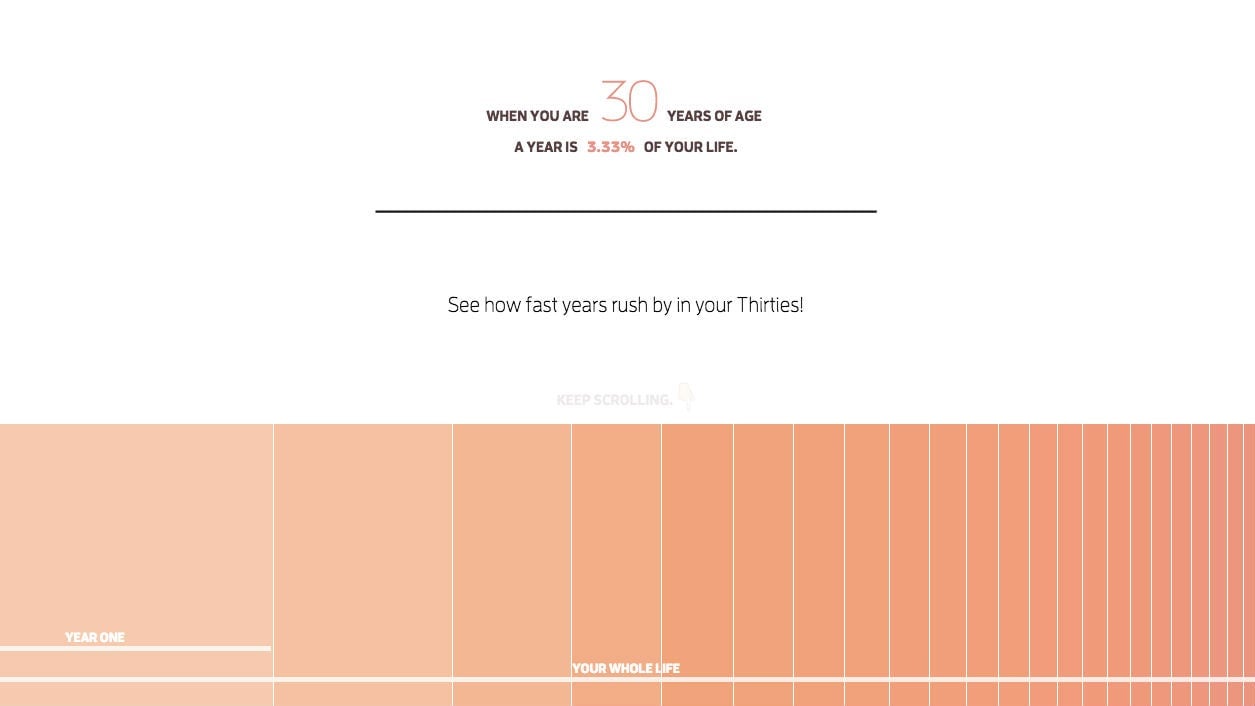This is exactly how time flies, in one fascinating interactive
Spending a month eagerly awaiting Christmas when you’re five years old feels roughly the same as waiting a year when you’re 54. At five, a month is almost 2% of your entire life lived up to that point. At 54, you need to experience a full year to “live” that same amount, relative to your much older age.


Spending a month eagerly awaiting Christmas when you’re five years old feels roughly the same as waiting a year when you’re 54. At five, a month is almost 2% of your entire life lived up to that point. At 54, you need to experience a full year to “live” that same amount, relative to your much older age.
This theory of time perception was first posed by French philosopher Paul Janet in 1897. It’s not a universally accepted theory, but then again—none are. Time perception is still not fully understood by psychologists or neuroscientists, but there is one thing most agree on: The more time you’ve lived, the shorter time feels.
Austrian designer Maximilian Kiener used this theory to create a profoundly interesting interactive of life moving literally before your eyes. When you click the link, you’ll be prompted to scroll through a hypothetical lifetime of 100 years (we can dream) and then watch as the years pass quicker and quicker. ”Like many things, this will take some patience to get through,” Kiener writes. “But in the end it will be over faster than you thought or hoped it would be.”
According to Janet’s theory, half of your perceived life is already over at age seven. Of course, that doesn’t account for your first few years, which are often impossible to remember. Adjusting for that, then your perceived life is about half over at 18. If a graduating high-schooler feels as though her life is coming to an end, that might be because, to some extent, it is.
One popular theory is that your younger years feel longer because young people are experiencing things for the first time. As you get older, though, you form fewer and fewer “new” memories. Another theory suggests an explanation steeped in chemistry: Older people experience time more quickly because of age-related changes in the brain (pdf), perhaps linked to declining levels of dopamine.
Facebook image by Ann Gordon on Flickr, licensed under CC BY-SA 2.0.